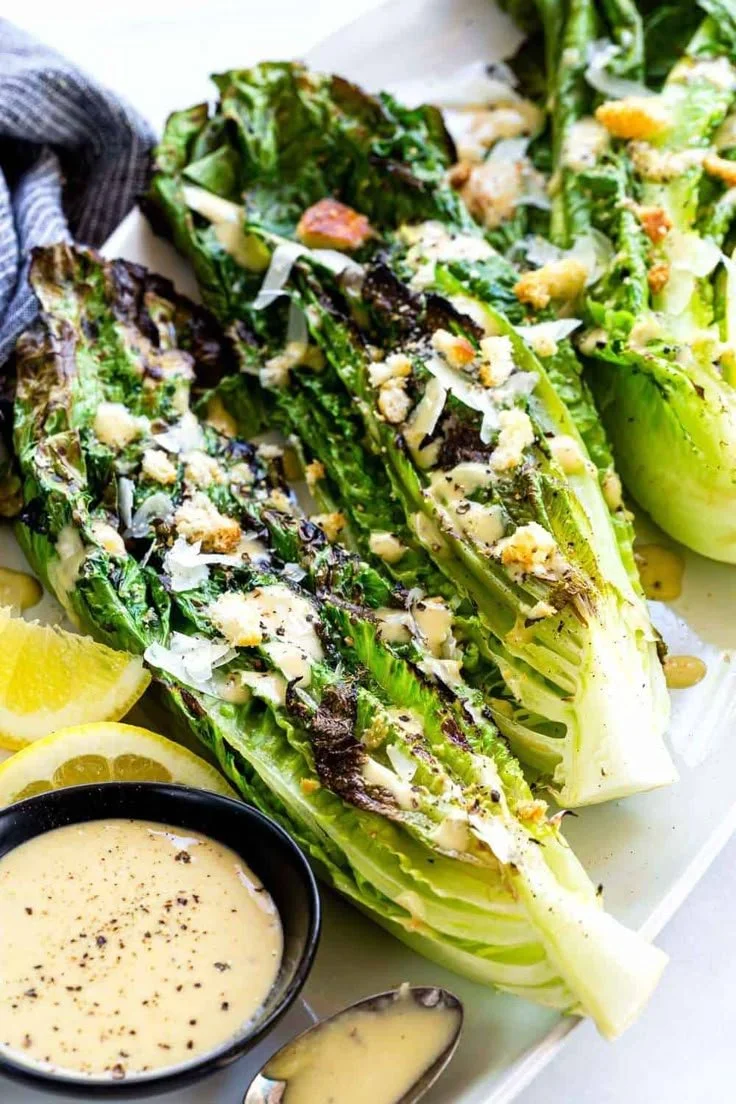The Art of Cooking Lettuce
Cooking lettuce isn’t just for restaurant kitchens; it’s an easy, delicious move at home too. Once you try it, you’ll see it’s a smart (and tasty) way to get even more from your greens. At Area 2 Farms, we grow lettuces that don’t just survive a little heat, they thrive in it. Our Farm Crunch, a crisp and sturdy green leaf variety, is a perfect example. But even tender types like butterhead or romaine can transform when lightly wilted. Cooking lettuce brings out new textures, subtle sweetness, and a whole new way to love your greens.
Why Cook Lettuce?
It’s All About the Water
Lettuce is over 90% water. When you apply heat, that moisture helps the leaves wilt quickly while staying tender. The result? A silky texture and a mellow flavor. Just a couple of minutes in a hot pan can completely transform the leaf.You’re Unlocking Natural Sugars
Heating breaks down the cell walls in lettuce, releasing natural sugars that are less noticeable when raw, which is why cooked lettuce tastes sweeter and less bitter.It’s a Great Way to Use Up Greens
Maybe your lettuce is a little soft, or you’ve just got more than you can fit into salads this week. Cooking helps stretch your greens further and prevents waste.Some Lettuces Were Born for It
Not all lettuce is delicate. Farm Crunch, for example, was selected for its structure and bite—it holds up to heat far better than other varieties. That sturdiness means you can sear it, braise it, or toss it into soups without it falling apart. Romaine and Little Gem are also naturally firmer and ideal for light charring.
Lettuce That Loves Heat
Some lettuces are naturally better suited to wilting or quick cooking:
Romaine: Sturdy and slightly bitter, romaine gets sweeter when seared or grilled.
Little Gem: Think of it as baby romaine—great halved and charred.
Butterhead & Leaf Lettuce: More delicate, best for quick wilts or soups.
How to Cook Lettuce
Here are a few easy methods to bring out your lettuce’s warm side, along with expert tips to elevate your dishes:
Sauté It
Roughly chop your lettuce and add it to a hot pan with olive oil or butter. Cook just until wilted (1 to 3 minutes) then season with salt, pepper, lemon juice, or a splash of vinegar.
Tip: Try it with garlic, chili flakes, and a handful of fresh herbs (like this dill or mint).
Grill or Pan-Sear It
Halve romaine heads lengthwise and brush with olive oil. Or use Farm Crunch leaves brushed with olive oil. Grill or sear cut-side-down in a hot pan for 2–3 minutes until lightly charred. Top with Parmesan, tahini dressing, or crispy breadcrumbs.
Tip: Grill for a smoky flavor and serve with a vinaigrette or creamy dressing.
Add to Soup or Stir-Fry
Throw chopped lettuce in right at the end of cooking. It wilts fast and adds color and lightness. It’s perfect in brothy soups, rice bowls, or quick vegetable stir-fries.
Tip: Add lettuce in the last 2-3 minutes of cooking for a fresh, green note.
Braise It
Braising works best with firmer varieties. Gently cook your lettuce in broth with aromatics (onion, garlic, herbs) for a silky, melt-in-your-mouth side dish.Tip: Braise for 10-15 minutes to achieve tender, flavorful results. Add cream or parmesan for richness.
How to Use Cooked Lettuce
Now that it’s cooked—what do you do with it? Plenty:
Toss wilted lettuce into a warm grain bowl with a fried egg.
Layer grilled lettuce on a sandwich or burger.
Add braised lettuce to noodles or rice with soy sauce and chili oil.
Use sautéed lettuce as a base for roasted veggies or tofu.
Serve charred lettuce with a dollop of Greek yogurt and fresh herbs.
Balance flavors by pairing with acidic (lemon, vinegar) or umami (soy sauce, anchovy) elements.
Final Tips for Cooking Lettuce
Don’t Overdo It: The key to cooking lettuce is speed. You're not trying to stew it for hours—just a quick turn in the heat to soften the edges and deepen the flavor. Overcooking can make it mushy or dull.
Balance Flavors: Pair cooked lettuce with acidic or umami elements to counter its mild bitterness and enhance taste.
Choose the Right Lettuce: Opt for heartier varieties like romaine, escarole, or Farm Crunch for cooking, as they maintain structure when heated.
Area 2 Farms for Locals
Your food should be equally accessible and nutritious. Which is where we come in. At Area 2 Farms, we grow fresh organic produce within 10 miles of you.




